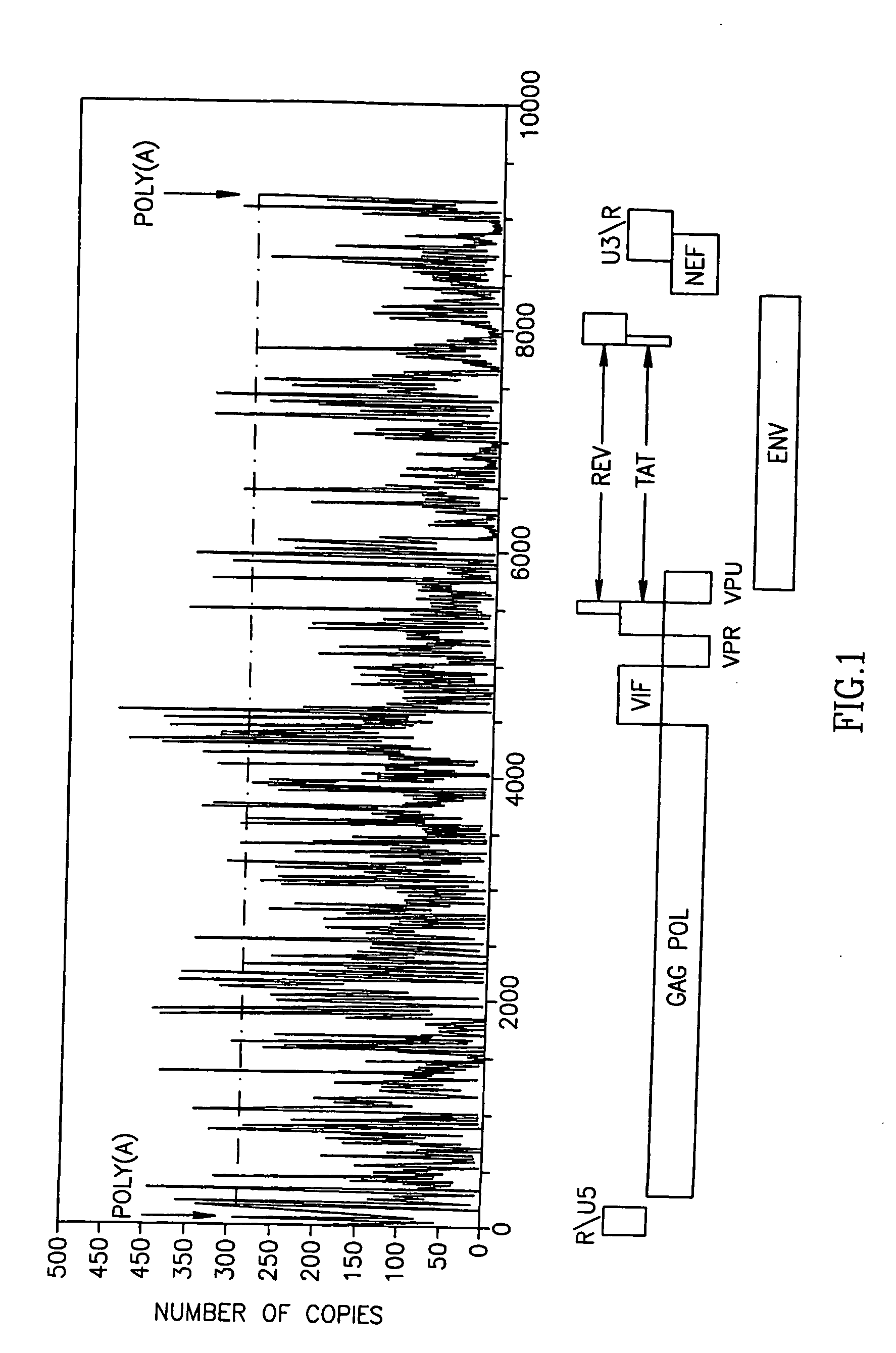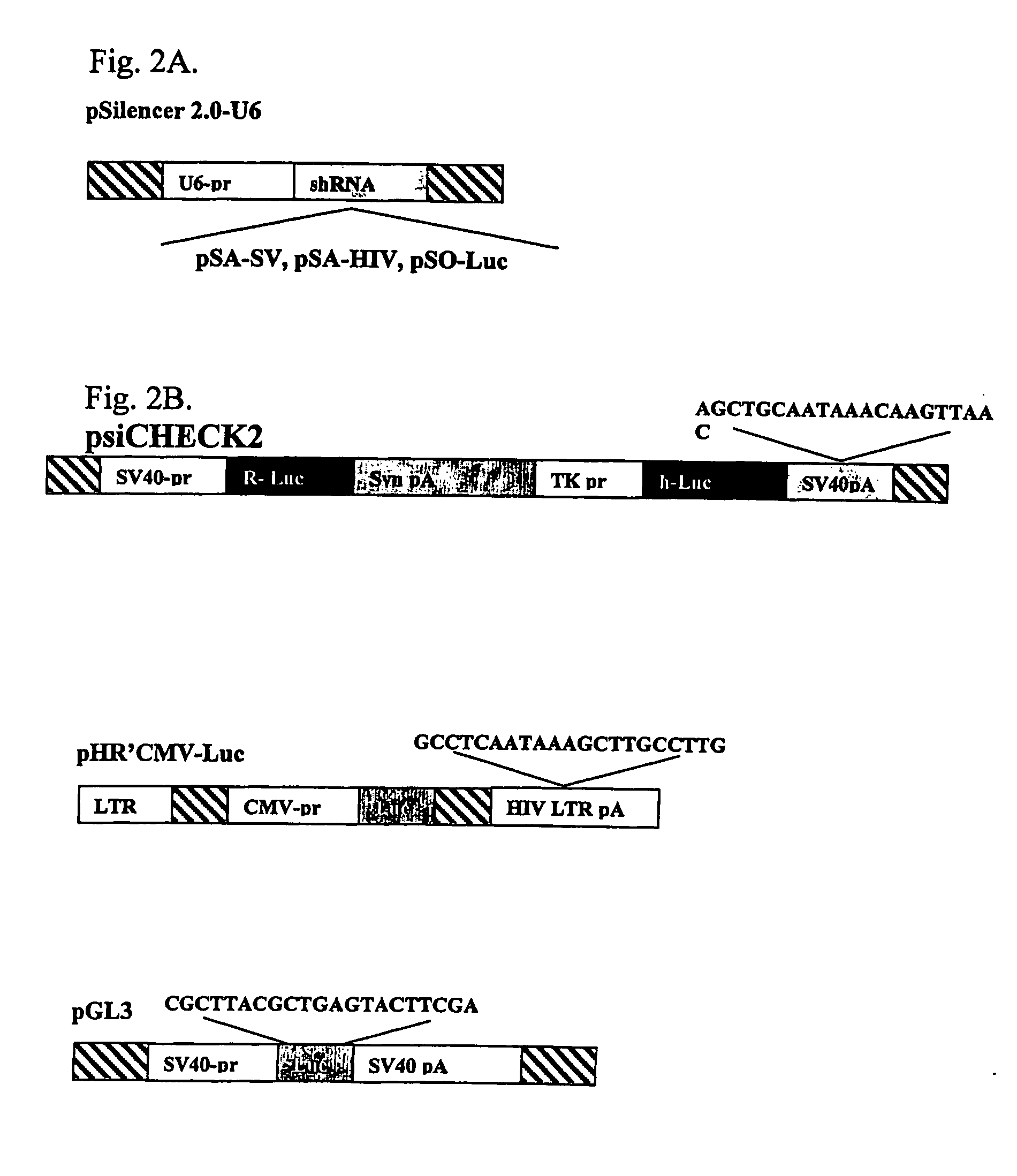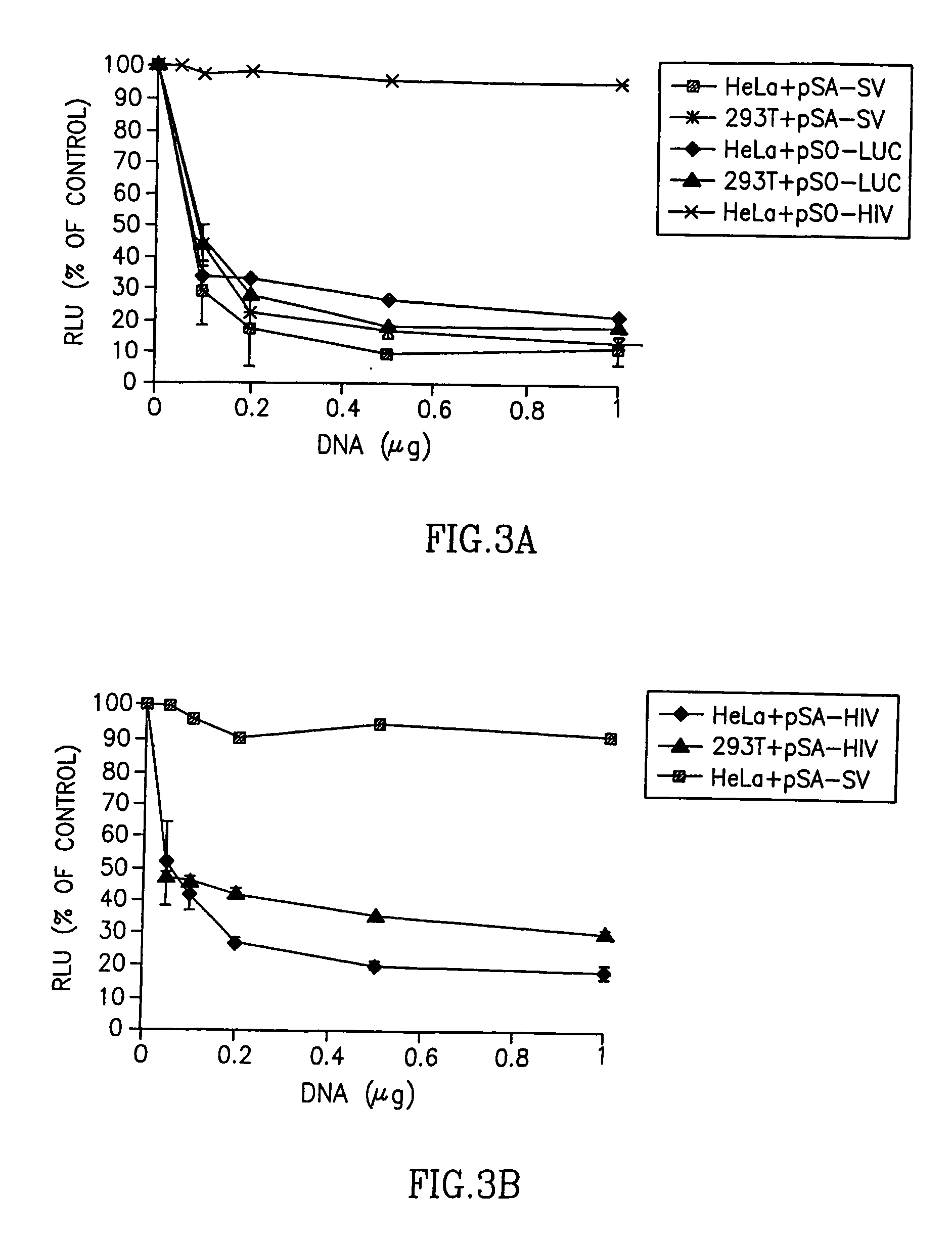Universal target sequences for siRNA gene silencing
- Summary
- Abstract
- Description
- Claims
- Application Information
AI Technical Summary
Benefits of technology
Problems solved by technology
Method used
Image
Examples
example 1
The Polyadenylation Signal of mRNAs as a Target for siRNA: Bioinformatic Analysis for Conservation and Uniqueness of the Poly(A) Region
[0150] Computational analysis of the hunan mRNA 3′UTR database was conducted in order to determine the uniqueness of sequences flanking the poly(A) signal (Table 2). Among the 8477 3UTRs sequences containing one occurrence of AATAAA, 8477 mRNAs harbor a 21-mer unique sequence, including the AATAA, 10 bases upstream and 5 bases downstream. This signature can be used to uniquely specify each of these genes. This means that 97.4% of the genes in the dataset can be specifically recognized using their poly(A) region. The rest of the poly(A) regions, are shared among several genome locations, of which at least 25% are annotated to be producing the same protein. Many of the others belong to different genes that produce different proteins, but belong to the same protein family, e.g. the two genes: WILLIAMS BEUREN SYNDROME CHROMOSOME REGION 20C ISOFORM 1 and...
example 2
The Polyadenylation Signal of mRNAs as a Target for siRNA
[0152] To test experimentally if the poly(A) region is indeed an efficient target for siRNA silencing, vectors that express a 21 bases long shRNA, homologous to the poly(A) region, that include, the AATAAA sequence, five bases upstream and ten bases downstream, were constructed (FIG. 2A). These shRNA expression plasmid vectors were co-transfected into HeLa and 293T cells with vectors in which the RNA of the luc gene is processed at the 3′ end at either a SV40 or a HIV-1 poly(A) signal (FIG. 2B). As a control, cells were co-transfected with a vector in which the Renilla Luciferase (R-luc) RNA is processed at a synthetic poly(A), nonhomologouse to either one of the two siRNAs (FIG. 2B). In experiments that targeted the shRNA to the SV40 poly(A) region, the vector pSA-SV, was cotransfected together with the psiCHEK2, in which the luc RNA is processed at the SV40 poly(A) signal, and the control R-luc gene is processed at a synthe...
example 3
siRNA Directed Inhibition of SV40 Late Proteins and Viral Replication
[0157] The SV40 circular dsDNA chromosome is transcribed from two promoters controlling the expression of the early and late viral fluctions. The 3′ end processing of each of these two transcripts is controlled by a different poly(A) signal. To determine whether vectors expressing siRNA directed against the SV40 poly(A) region can inhibit viral propagation, cells were co-transfected with SV40 complete genome DNA and pSA-SV (targeting the SV40 late poly(A) region). The cell cultures were lysed seventy-two hours following transfection and proteins were resolved by PAGE and subjected to Western blot analysis. Antibodies specific for the SV40 VP1 capsid protein were used for the detection of VP1. In cells co-transfected with pSA-SV, the VP1 protein level was 16 fold lower then in the control cells, co-transfected with a non-relevant siRNA construct (FIG. 5A).
[0158] Next, it was analyzed whether siRNA mediated inhibit...
PUM
| Property | Measurement | Unit |
|---|---|---|
| Fraction | aaaaa | aaaaa |
| Fraction | aaaaa | aaaaa |
| Fraction | aaaaa | aaaaa |
Abstract
Description
Claims
Application Information
 Login to View More
Login to View More - R&D
- Intellectual Property
- Life Sciences
- Materials
- Tech Scout
- Unparalleled Data Quality
- Higher Quality Content
- 60% Fewer Hallucinations
Browse by: Latest US Patents, China's latest patents, Technical Efficacy Thesaurus, Application Domain, Technology Topic, Popular Technical Reports.
© 2025 PatSnap. All rights reserved.Legal|Privacy policy|Modern Slavery Act Transparency Statement|Sitemap|About US| Contact US: help@patsnap.com



